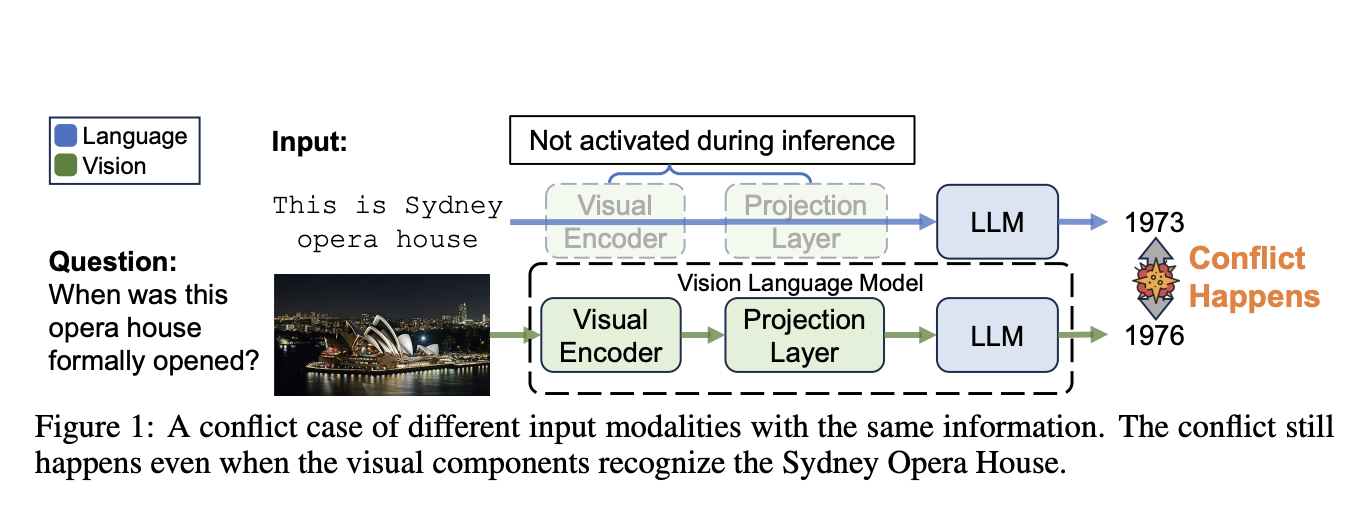
Understanding Large Vision-Language Models (LVLMs)
Large Vision-Language Models (LVLMs) can analyze and understand both images and text. However, they sometimes struggle when the visual and language parts don’t match, leading to conflicting information. For instance, when asked about the same subject in different formats, LVLMs may give contradictory answers, which affects their performance.
Research Focus
Current research has mainly aimed at improving individual components of LVLMs, but little attention has been given to the conflicts between different modalities. This paper is the first to define and explore these cross-modality parametric knowledge conflicts in LVLMs, referencing various studies and datasets that contribute to understanding these issues.
Dynamic Contrastive Decoding (DCD) Method
A team of researchers developed a new method called Dynamic Contrastive Decoding (DCD) to address these conflicts. This method removes unwanted predictions to reduce discrepancies and incorporates answer confidence to refine predictions further. It also includes two prompt-based strategies for models that do not provide prediction logits, enhancing their performance.
Performance Improvements
The DCD method has shown positive results, improving accuracy by 2.36% on the ViQuAE dataset and 2.12% on the InfoSeek dataset when tested with the LLaVA-34B model.
Key Findings
This research highlights the importance of recognizing and addressing cross-modality conflicts in LVLMs. It demonstrates that merely increasing model size does not eliminate these issues. The DCD method effectively enhances answer accuracy by filtering out unreliable predictions. For models without access to logits, the prompt-based strategies vary in effectiveness based on model size, with larger models showing better understanding.
Future Applications
The DCD approach can be utilized to improve accuracy in multimodal data and optimize outputs.
Stay Connected
Check out the Paper and GitHub for more details. Follow us on Twitter, join our Telegram Channel, and connect with our LinkedIn Group. If you appreciate our work, subscribe to our newsletter and join our community with over 50k members on ML SubReddit.
Upcoming Event
RetrieveX – The GenAI Data Retrieval Conference on Oct 17, 202.
Leverage AI for Business Growth
To stay competitive, consider using Dynamic Contrastive Decoding (DCD) in your AI strategies:
- Identify Automation Opportunities: Find key areas for AI enhancement in customer interactions.
- Define KPIs: Ensure measurable impacts from your AI initiatives.
- Select an AI Solution: Choose tools that fit your needs and can be customized.
- Implement Gradually: Start small, gather data, and expand wisely.
For AI KPI management advice, contact us at hello@itinai.com. For ongoing insights into AI applications, follow us on Telegram or @itinaicom.
Transform Your Sales and Customer Engagement
Explore how AI can redefine your processes at itinai.com.
























